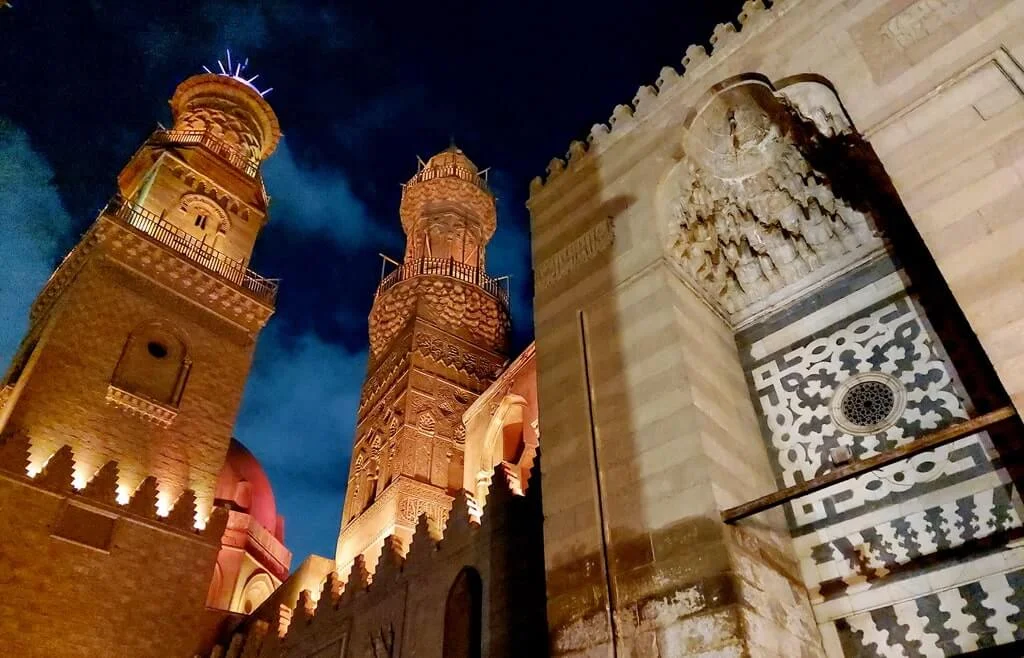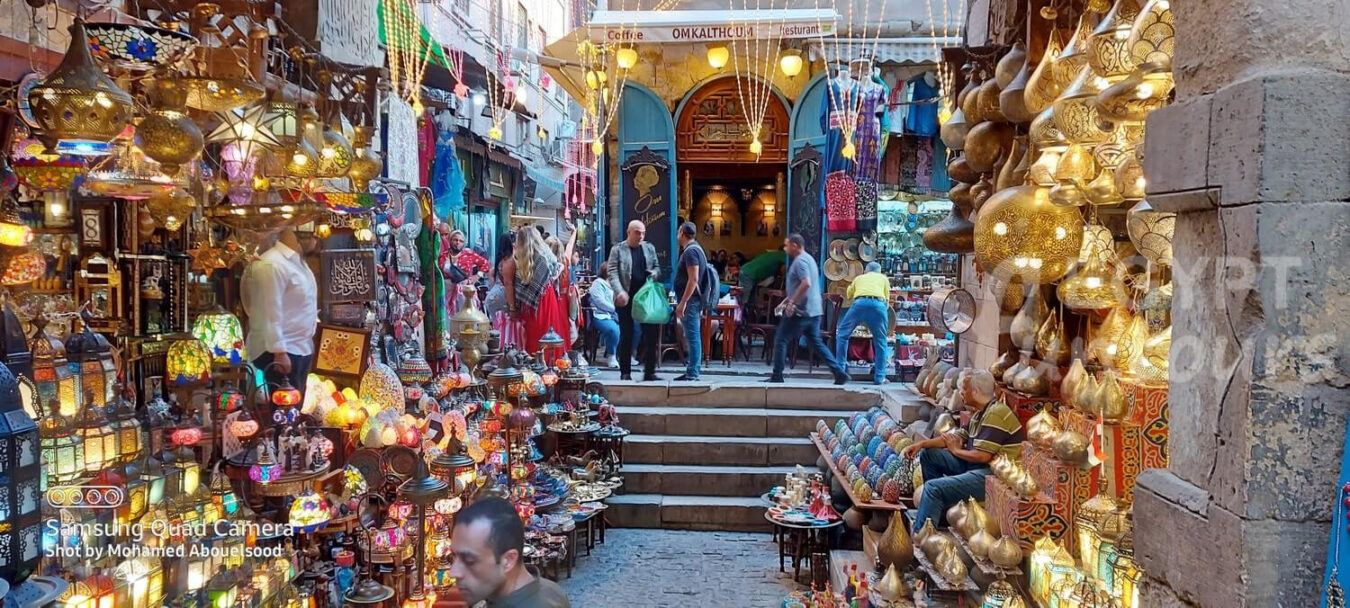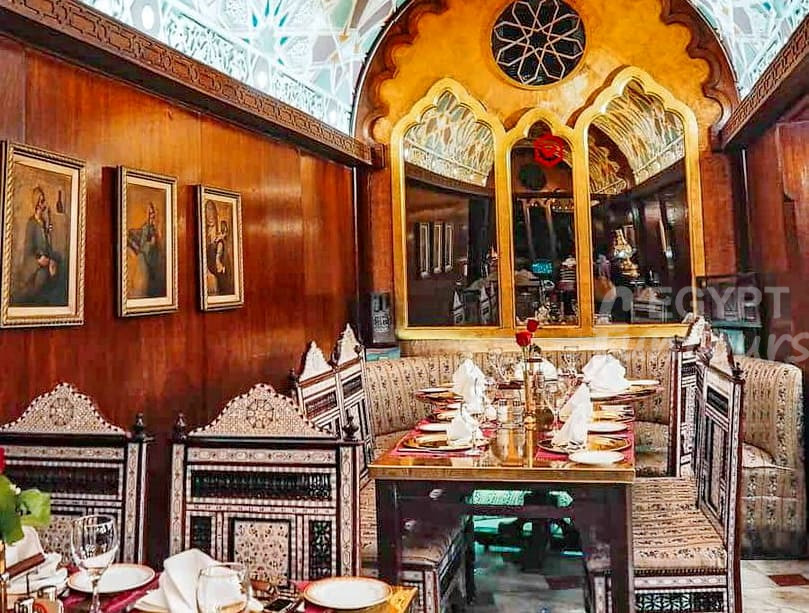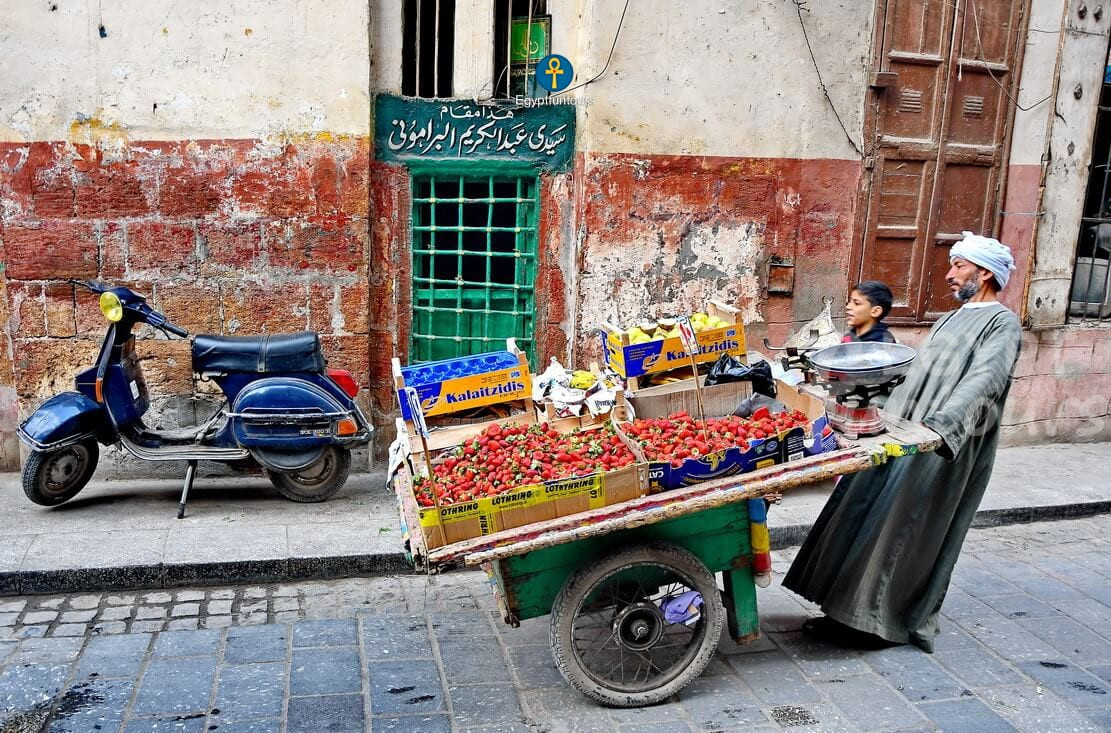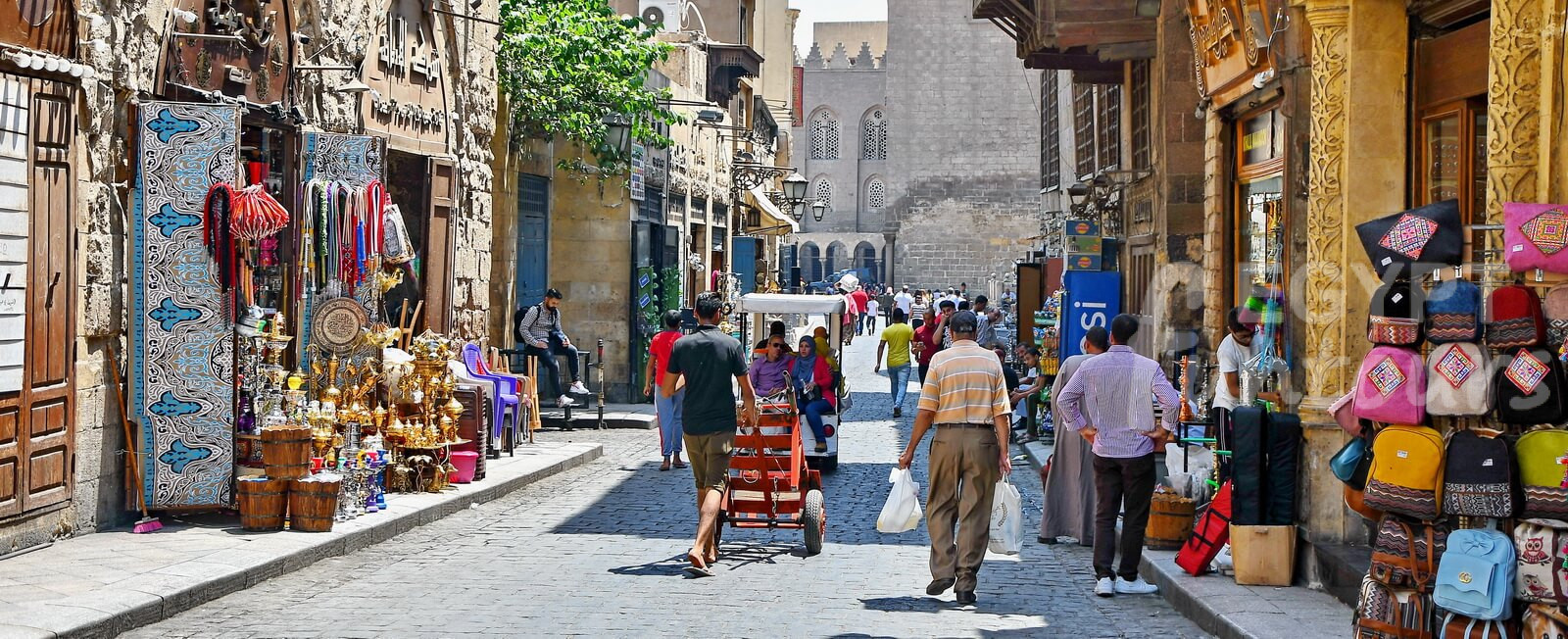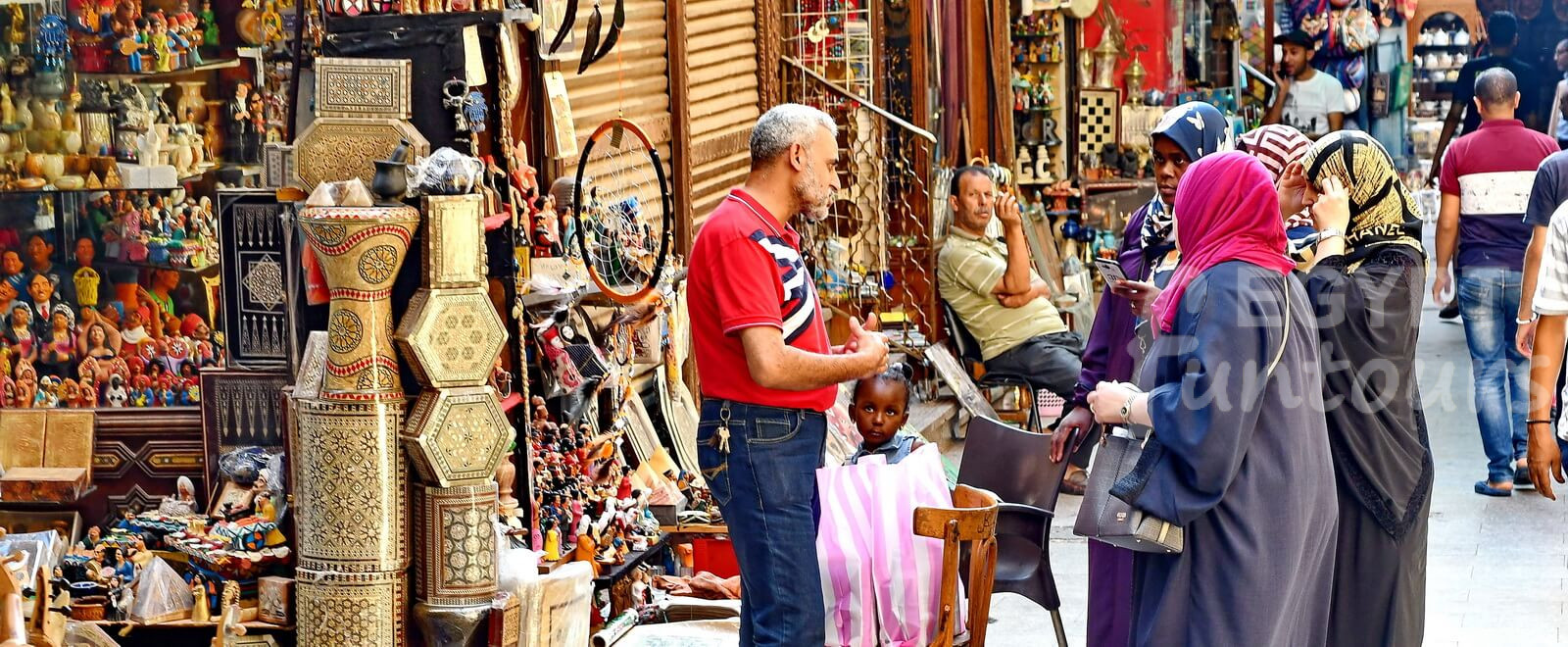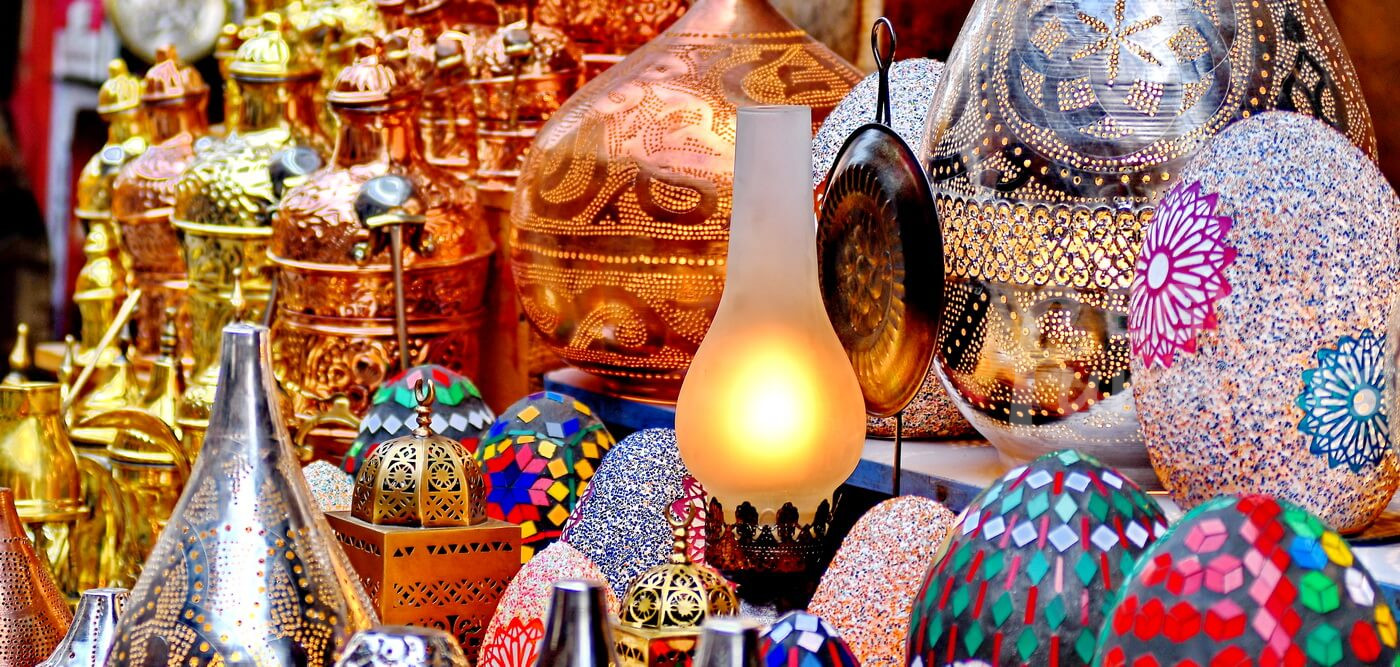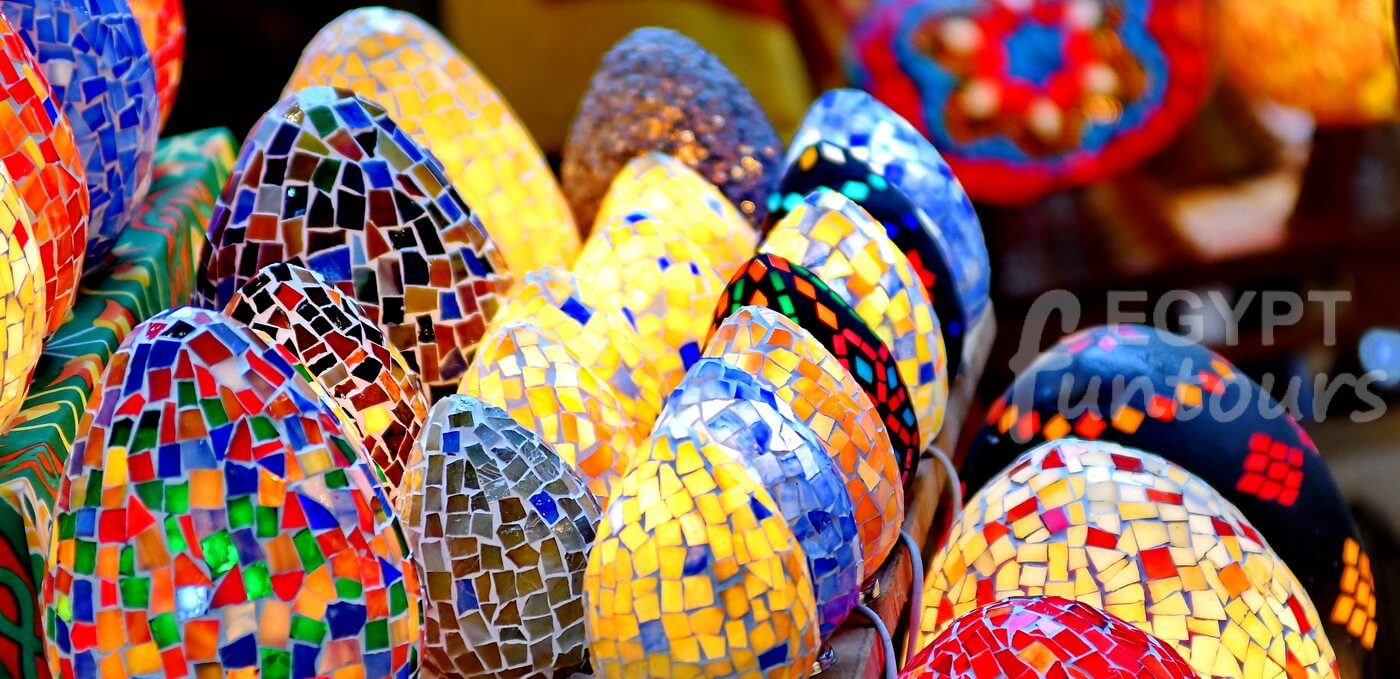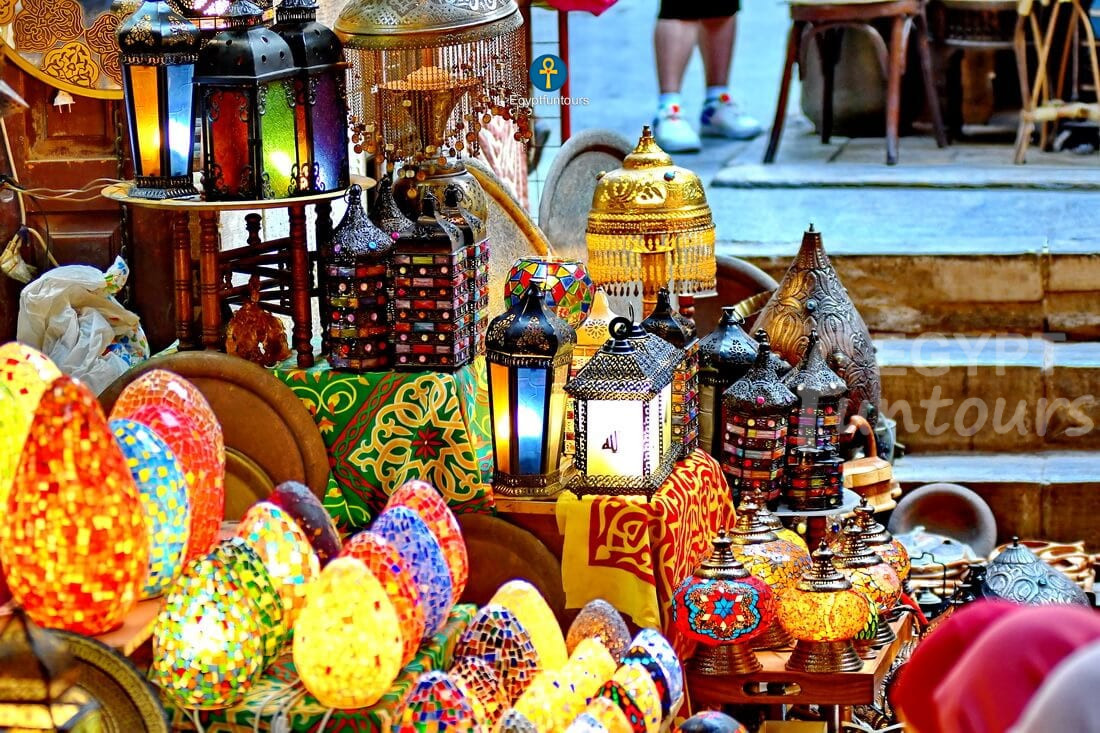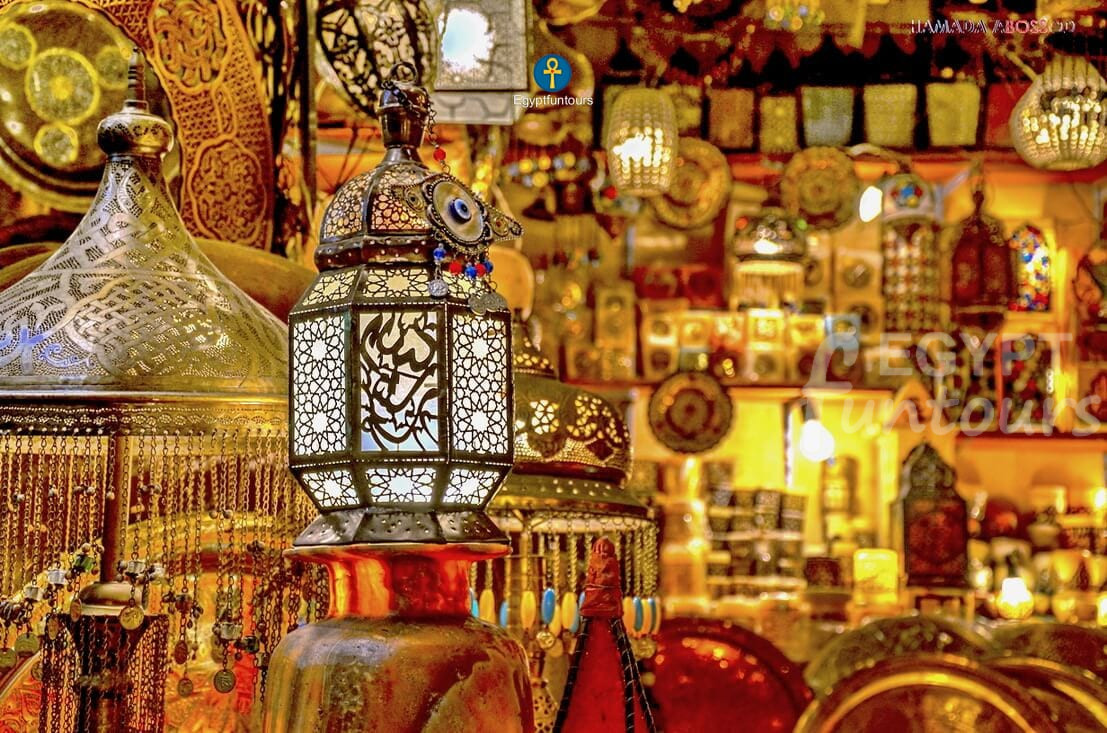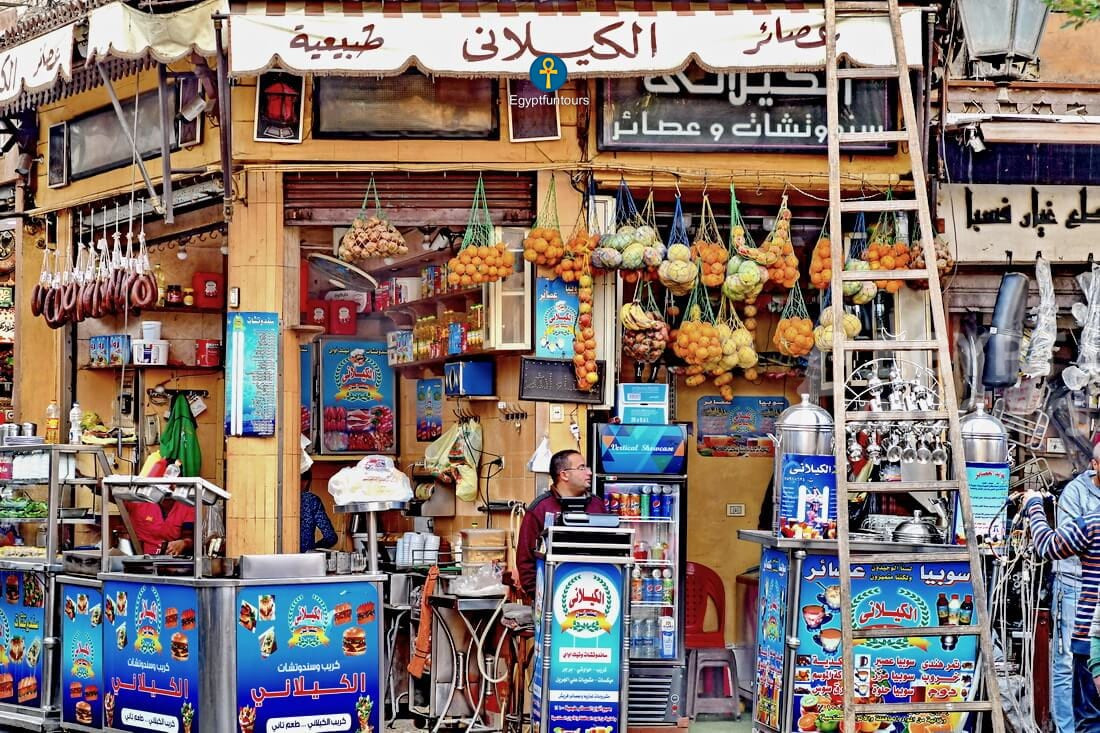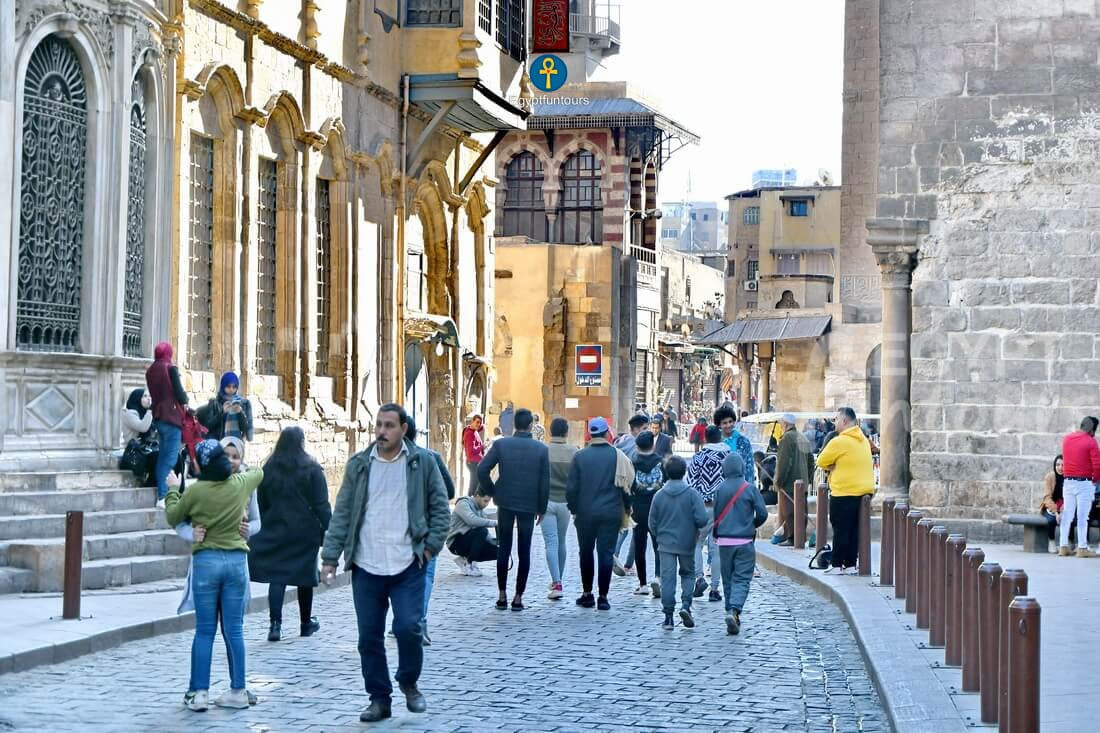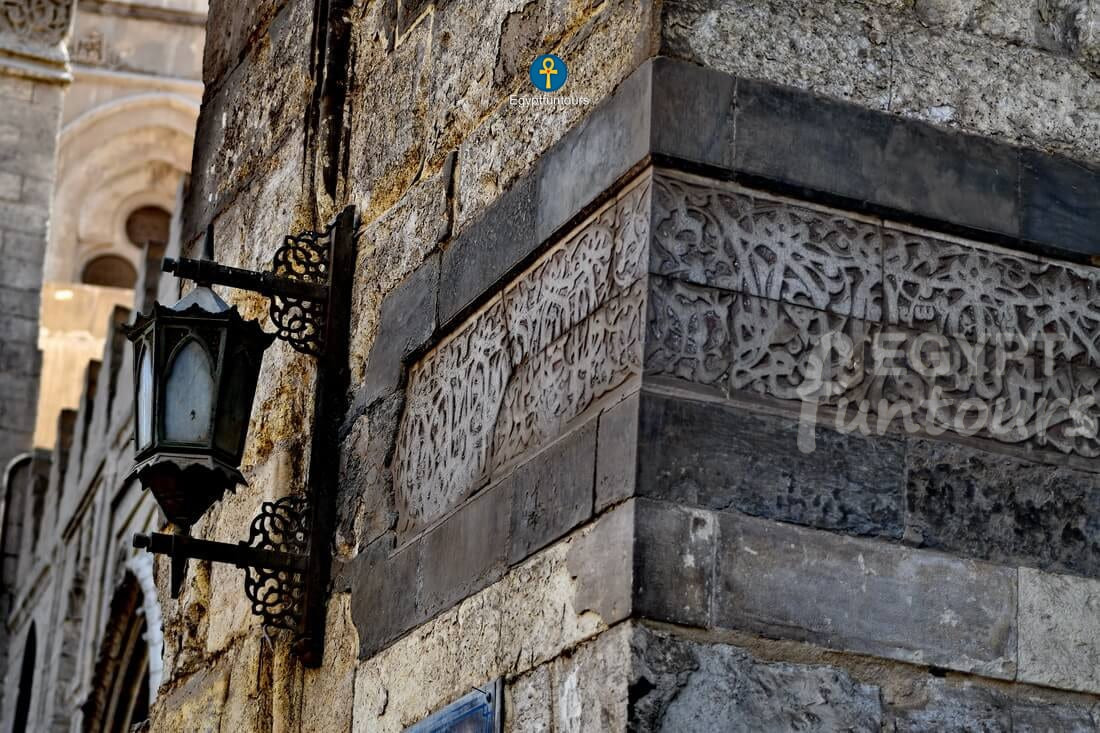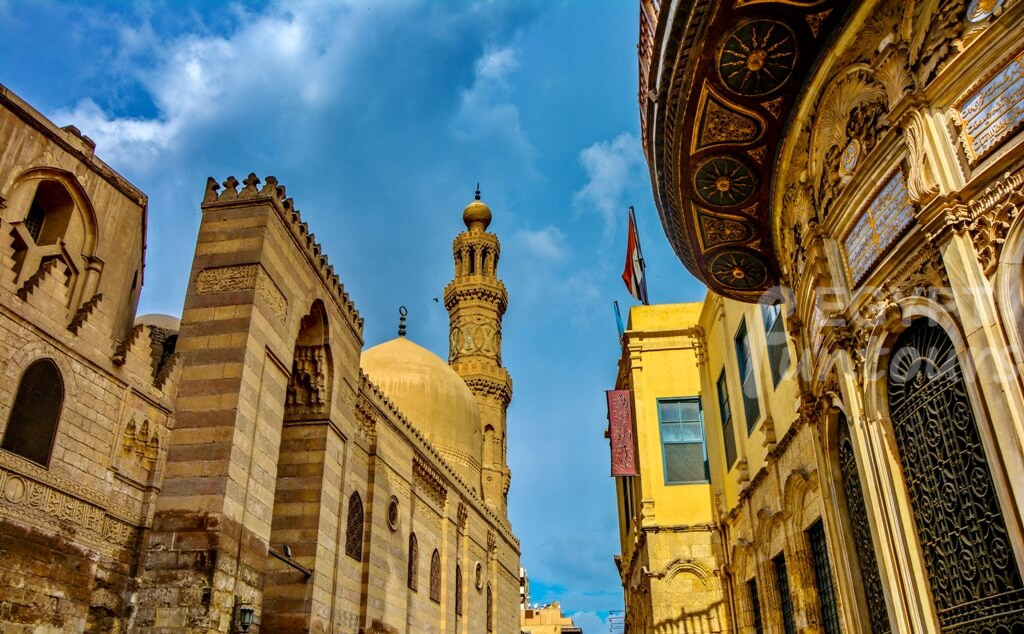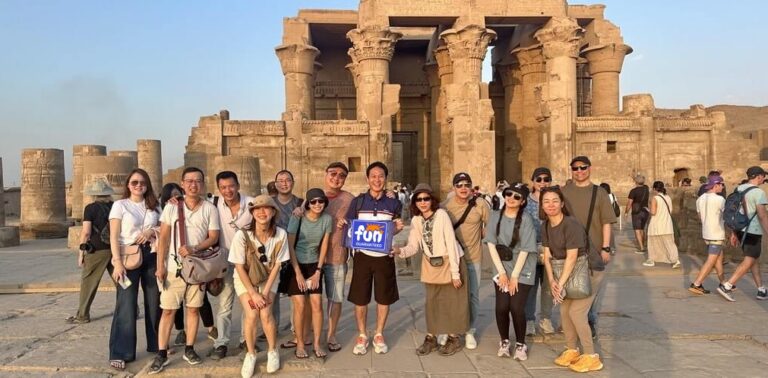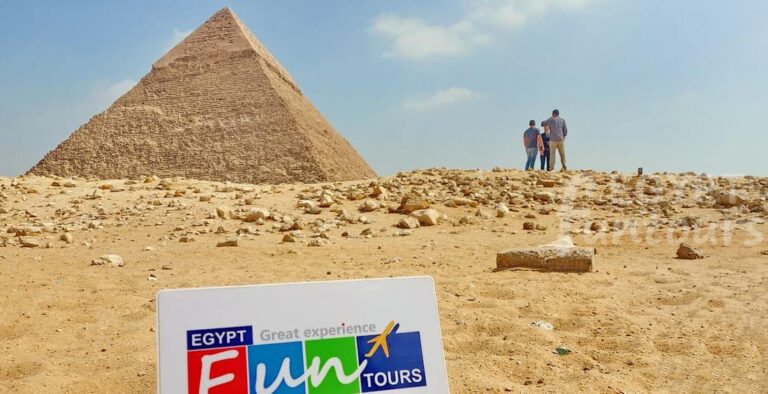Step back in time to the golden age of Cairo. Welcome to Al-Muizz li-Din Allah al-Fatimi Street, the historical backbone of Islamic Cairo and one of the most magical, concentrated streets of medieval architecture in the world.
This is not just a street; it’s a living, breathing “open-air museum.” For nearly a kilometer (0.6 miles), you are walking on a 1,000-year-old pavement, flanked on both sides by the grandest collection of Mamluk, Fatimid, and Ottoman mosques, madrasas (schools), palaces, and mausoleums found anywhere.
This is the “City of a Thousand Minarets” in one magnificent stroll.


